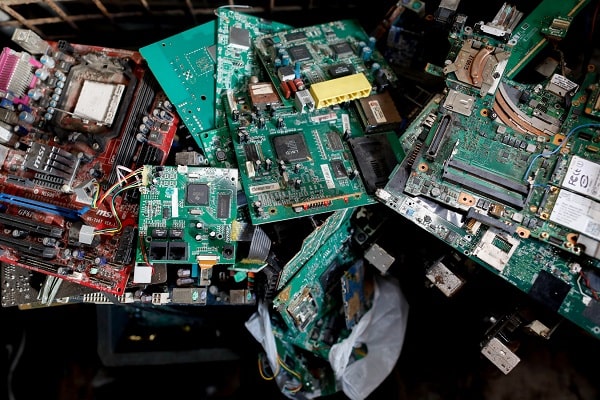
As the world becomes increasingly digitalized, electronic waste, or eWaste, has emerged as a significant environmental challenge. However, with challenges come opportunities for innovation and sustainable solutions.
In this article, we will explore the future of eWaste management, focusing on the exciting innovations and sustainable strategies that are shaping the way we handle electronic waste.
Advanced Recycling Processes:
Innovative recycling processes are revolutionizing the way eWaste is handled. Traditional methods often involve dismantling devices manually, which can be time-consuming and labor-intensive. However, advanced technologies such as automated robotic systems are being developed to streamline the recycling process.
These robots can disassemble electronic devices more efficiently, separating valuable components and materials for recycling. By automating the recycling process, we can significantly increase efficiency and reduce the environmental impact of eWaste management.
Circular Economy Models:
The concept of a circular economy is gaining momentum in the eWaste management sector. Instead of the linear “take-make-dispose” approach, a circular economy focuses on resource efficiency and minimizing waste. In this model, products are designed with recyclability in mind, and materials are kept in circulation for as long as possible.
This approach encourages the refurbishment, repair, and remanufacturing of electronic devices, reducing the need for raw materials and minimizing eWaste generation. Embracing the circular economy can pave the way for a more sustainable and resource-efficient future.
E-Waste-to-Energy Conversion:
Another promising innovation in eWaste management is the conversion of eWaste into energy. Through advanced thermal or chemical processes, certain types of eWaste can be transformed into usable energy sources. For example, incineration processes can generate heat and electricity, while anaerobic digestion can produce biogas.
These energy conversion technologies not only reduce the volume of eWaste that ends up in landfills but also provide a renewable energy source. Implementing eWaste-to-energy solutions can contribute to a more sustainable energy mix and help address both the eWaste and energy challenges simultaneously.
Environmentally Friendly Materials:
The future of eWaste management also lies in the development and utilization of environmentally friendly materials for electronics. Researchers are exploring alternatives to hazardous substances commonly found in electronic devices, such as lead, mercury, and brominated flame retardants.
Sustainable materials like bioplastics, bio-based components, and non-toxic elements are being integrated into electronic designs. By embracing eco-friendly materials, we can reduce the environmental impact of eWaste both during production and at the end of the product lifecycle.
Internet of Things (IoT) for eWaste Monitoring:
The Internet of Things (IoT) offers promising solutions for eWaste management. IoT-enabled devices can track and monitor eWaste throughout its lifecycle, providing real-time data on the location, quantity, and condition of electronic devices. This technology facilitates efficient collection, sorting, and recycling processes by optimizing logistics and ensuring proper disposal.
Moreover, IoT devices can enable predictive maintenance, extending the lifespan of electronic products and reducing premature disposal. Integrating IoT into eWaste management systems can enhance efficiency, reduce costs, and improve sustainability.
Conclusion:
The future of eWaste management is brimming with innovation and sustainable solutions. Advanced recycling processes, circular economy models, eWaste-to-energy conversion, environmentally friendly materials, and IoT-enabled monitoring are transforming the way we handle electronic waste. By embracing these innovations, we can minimize the environmental impact of eWaste, conserve valuable resources, and create a more sustainable future.
The key lies in collaboration between industry, governments, and consumers to drive the adoption of these technologies and ensure the responsible management of eWaste.